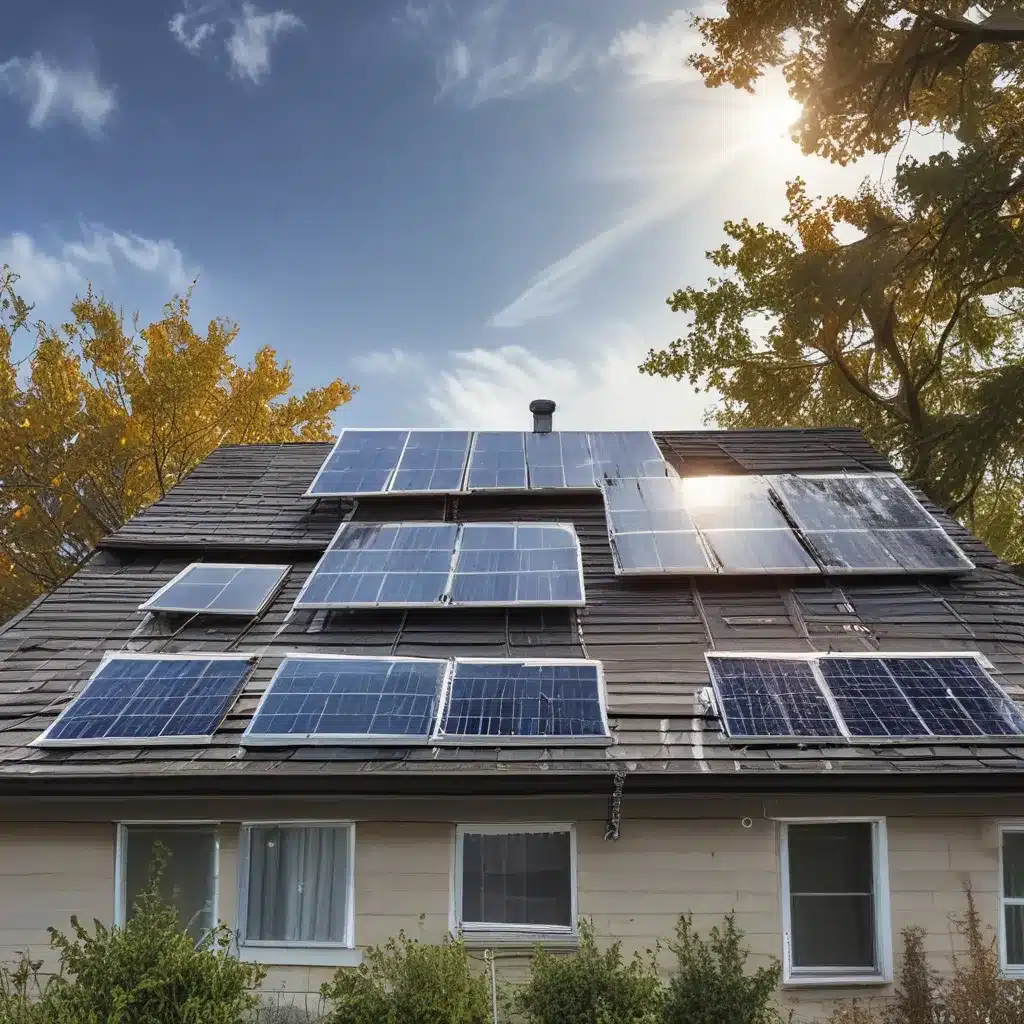
Ah, the age-old question that’s on everyone’s mind when it comes to solar power – how long do these magical energy-harvesting panels actually last? Well, my friends, let me tell you a tale of solar panel longevity that’ll have you rethinking your energy future.
As I delved into the world of solar solutions at Solar A Systems Inc., I discovered that the lifespan of solar panels is a fascinating topic, filled with intricate details and surprising revelations. So, strap in, because we’re about to embark on a journey that’ll shed light on the true durability of these renewable energy marvels.
The Industry Standard: 25 to 30 Years
Let’s start with the basics. According to the folks over at Forbes, the industry standard for most solar panels’ lifespans is a respectable 25 to 30 years. That’s right, these panels are built to last, outliving many of us and our beloved household appliances.
Now, I know what you’re thinking – “That’s great and all, but what’s the catch?” Well, the good news is that there really isn’t one. Most reputable manufacturers offer production warranties for 25 years or more, ensuring that you’re getting your money’s worth and then some.
Degradation Rates: The Slow and Steady Decline
Of course, it’s not all rainbows and sunshine (pun intended). Solar panels, like any other technology, do experience a gradual decline in their efficiency over time. This phenomenon is known as the “degradation rate,” and it’s an important factor to consider when assessing the longevity of your solar investment.
According to the Forbes article, the average degradation rate across all solar panels is around 0.5% per year. That means that after 25 years, your solar panels’ efficiency could be around 87.5% of their original capacity. Not too shabby, if you ask me.
But wait, there’s more! The quality of your solar panels can make a significant difference in their long-term performance. The Forbes article breaks down the degradation rates by solar panel tiers:
| Tier | Degradation Rate |
|---|---|
| Tier One | 0.3% |
| Tier Two | 0.5% |
| Tier Three | 0.8% |
Clearly, investing in Tier One solar panels can pay dividends in the long run, with a lower degradation rate and better overall performance. It’s like choosing the premium fuel for your car – it may cost a bit more upfront, but the long-term benefits are undeniable.
Beyond the Panels: Inverters and Racking
But solar panels aren’t the only components you need to consider when it comes to longevity. Let’s talk about the other key players in your solar system: inverters and racking.
Inverters are the unsung heroes of the solar world, responsible for converting the DC power generated by your panels into the AC power that your home can use. Unfortunately, these hardworking devices have a relatively shorter lifespan compared to the panels themselves, typically lasting around 10 to 15 years. Replacing an inverter can set you back $1,000 to $2,000, so it’s important to factor that into your long-term solar maintenance planning.
And then there’s the racking system – the sturdy structure that holds your solar panels in place. While the panels themselves may have a long lifespan, the racking is susceptible to the elements and can potentially incur damage from weather events like high winds or fallen branches. It’s crucial to work with an experienced installer to ensure that your racking is properly secured and able to withstand the test of time.
Factors Influencing Lifespan: Climate and Care
Now, let’s talk about the environmental factors that can impact the longevity of your solar panels. As the Forbes article mentions, the climate where you install your solar system can play a significant role.
For example, if you live in a scorching hot climate, your panels are more likely to experience faster degradation due to the intense heat. On the flip side, if you’re in a cooler region, your panels may enjoy a longer lifespan. And let’s not forget about other weather elements like humidity, hail, and high winds, all of which can contribute to the gradual deterioration of your solar setup.
But fear not, my friends, there are ways to combat these environmental challenges. Proper maintenance and care can go a long way in extending the lifespan of your solar panels. Regular cleaning to remove debris, the installation of critter guards, and collaborating with a reputable solar company for ongoing system checks can all help ensure your panels are operating at their peak performance for years to come.
The Break-Even Point: Recouping Your Investment
Now, I know what you’re really wondering – when will I start seeing the financial benefits of my solar investment? According to the Forbes article, the average break-even point for solar panel energy savings occurs between 6 to 10 years after installation.
That’s right, in as little as 6 years, you could start reaping the rewards of your solar power system, with the potential to save thousands of dollars over the lifetime of your panels. And with the federal tax credit and additional rebates or incentives available, the upfront cost of going solar can be significantly reduced, making it an even more attractive investment.
Conclusion: The Power of Longevity
So, there you have it, folks – the inside scoop on the impressive lifespans and durability of solar panels. From the industry-standard 25 to 30 years to the factors that can influence their longevity, we’ve covered it all.
As you embark on your solar power journey with Solar A Systems Inc., remember that these panels are built to last, and with the right care and attention, they can continue to provide you with clean, renewable energy for decades to come.
So, what are you waiting for? It’s time to harness the power of the sun and start saving on your energy bills, all while doing your part to protect the environment. The future is bright, and it’s powered by the long-lasting magic of solar panels!


